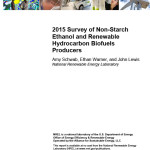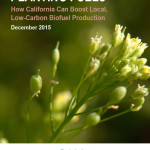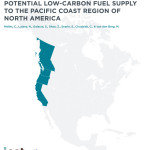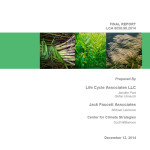Biofuel industry update, Part I
Last week the advanced biofuel producers from across the country – and even some international representatives – gathered in San Francisco for their twice-yearly industry get together. Hosted by Biofuels Digest, the event is a great way for advanced biofuel competitors to stay collegial, receive industry updates, learn from one another, and form important partnerships that will help the industry succeed.
The event is definitely an inside-baseball view of biofuels, focusing primarily on business models, investments and technology applications. At this stage of their growth, biofuel companies are largely focused on communicating within their own industry, to potential investors, and to the larger fuel industry. That is part of the reason so few people across the United States could define an advanced biofuel. This is both a blessing and a curse to these companies, as they are able to quietly refine their technologies without premature public scrutiny, but does not assist them with garnering public support for policies that create more demand for their products.
Part of the reason we’ve established Fueling Growth is to help those outside of the biofuel industry understand the depth, breadth and potential of advanced biofuels. After listening to dozens of updates from the companies present at the event, I’d like to provide a quick synopsis for you, outside of the biofuels industry, to get a glimpse of the status of the industry.
Partnerships
If there is one key takeaway, it is that partnerships are essential for this group. Different companies focus on perfecting different aspects of the value chain, things like delivering low-cost, effective enzymes, feedstocks rich in sugars or oil, feedstock processing or logistics, and plenty more. Very few companies are vertically integrated at this point, so there is an inter-dependent ecosystem of businesses all working to provide fungible alternatives to oil. We highlighted some interesting examples of partnerships in this year’s E2 Advanced Biofuel Market Report.
Research
An impressive amount of research is happening across the country, at dedicated facilities like the Joint BioEnergy Institute and Los Alamos National Lab, but also at dozens of universities. Universities might understandably specialize in feedstocks that are geographically relevant to their areas (UC San Diego does extensive work on algae while Iowa State paves the way on corn research), but plenty of other institutions like University of Illinois, Wisconsin, Florida, Texas A&M, and UC Davis, just to name a few, are working to crack the economics through genetic engineering, improved agronomic practices, and better production systems.
Feedstocks
Access to sufficient feedstock, and especially sugar, is a lingering question for many advanced biofuels. Companies like Sweetwater and Proterro are working towards some solutions. Proterro offers a solution by constructing a sucrose molecule from CO2, water and other nutrients. They grow the sugars in vertical panels, hung inside a balloon-style photobioreactor filled with cyanobacteria. They inject the balloon with carbon dioxide, something algae needs in abundance, and watch the sugar grow in their pilot facility in Florida.
SG Biofuels is working on perfecting their jatropha – a shrub or tree that bears a large, oil-rich seed – on arid land in Guatemala. With minimal water needs, this could be an attractive feedstock for the 745 million – 1.73 billion acres of abandoned or degraded cropland.
Both Chromatin and Ceres are working on sorghum strains, which is a grassy cousin of sugarcane. So far they are able to demonstrate higher sugar yields per acre, per year than sugarcane, and they continue to refine their product. Chromatin’s CEO Daphne Preuss especially stressed the importance of the relationships they are developing with their growers, as they are signing up farmers to grow their crop, not purchasing and managing company-owned land. This is a common model for many feedstock companies, and allows for even more discovery of crop performance on varying land types.
Algenetix, still stealthy enough not to have much of a website, reports a multi-pronged approach to feedstock production. They are breeding and contracting growers for oil crops, and unlike most other companies, also working on sugar producing biomass by contracting growers. The company is also partnering with researchers at universities and developing microbes from algae and yeast.
In Part II we will discuss what some of the biofuel production companies are up to these days, as well as some lessons from the investment and policy world.
Filed in: Blog • Mary Solecki












